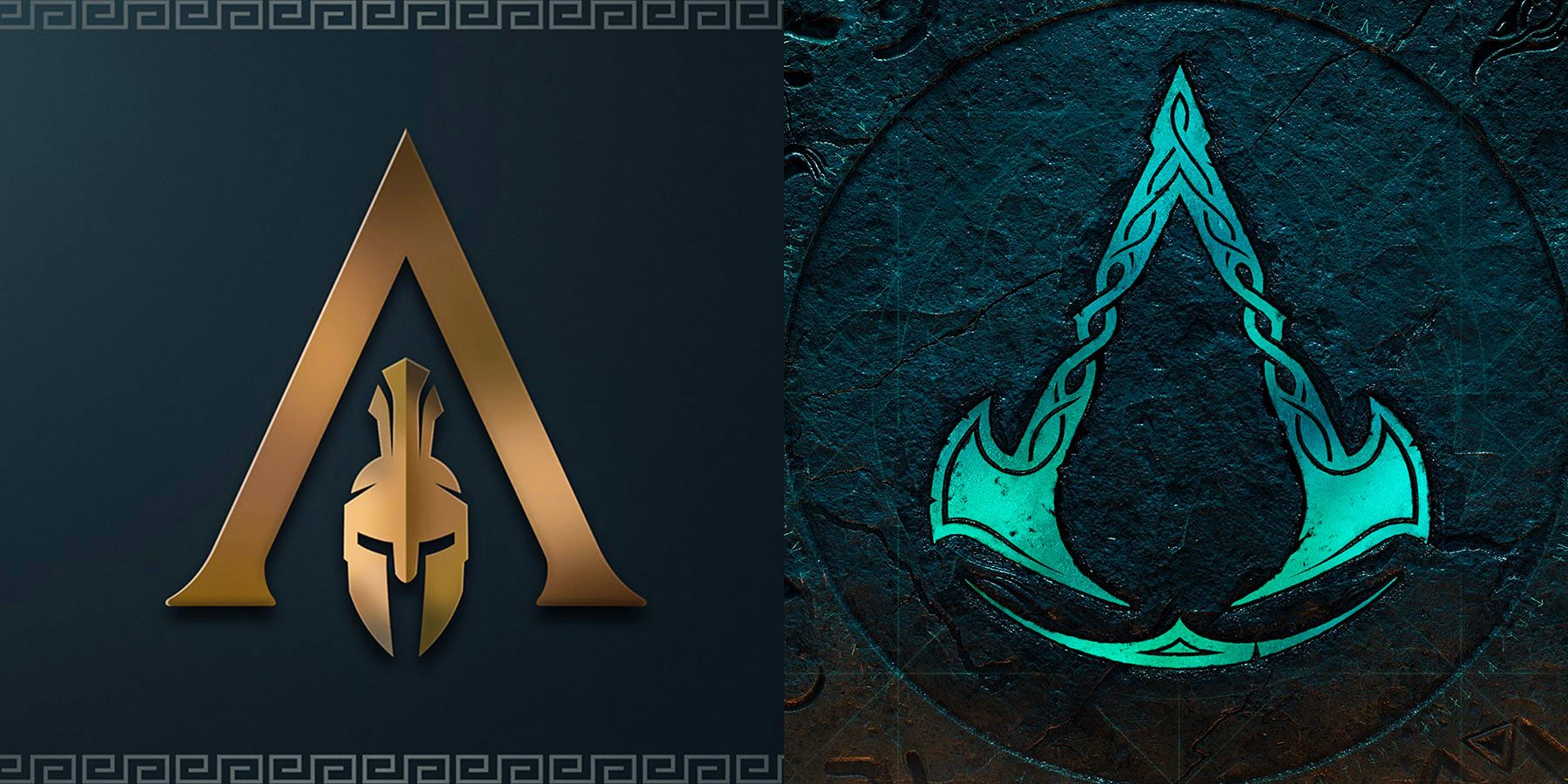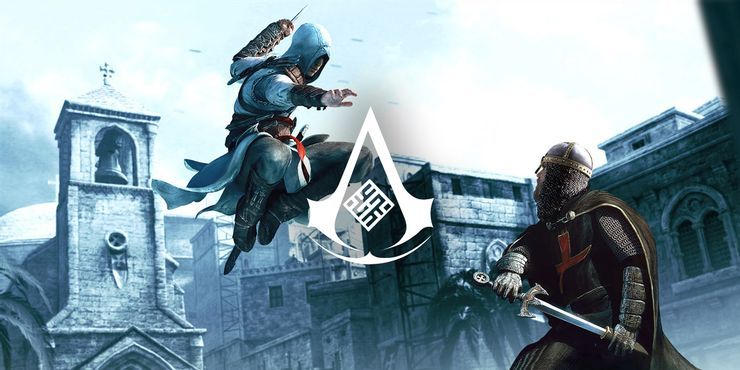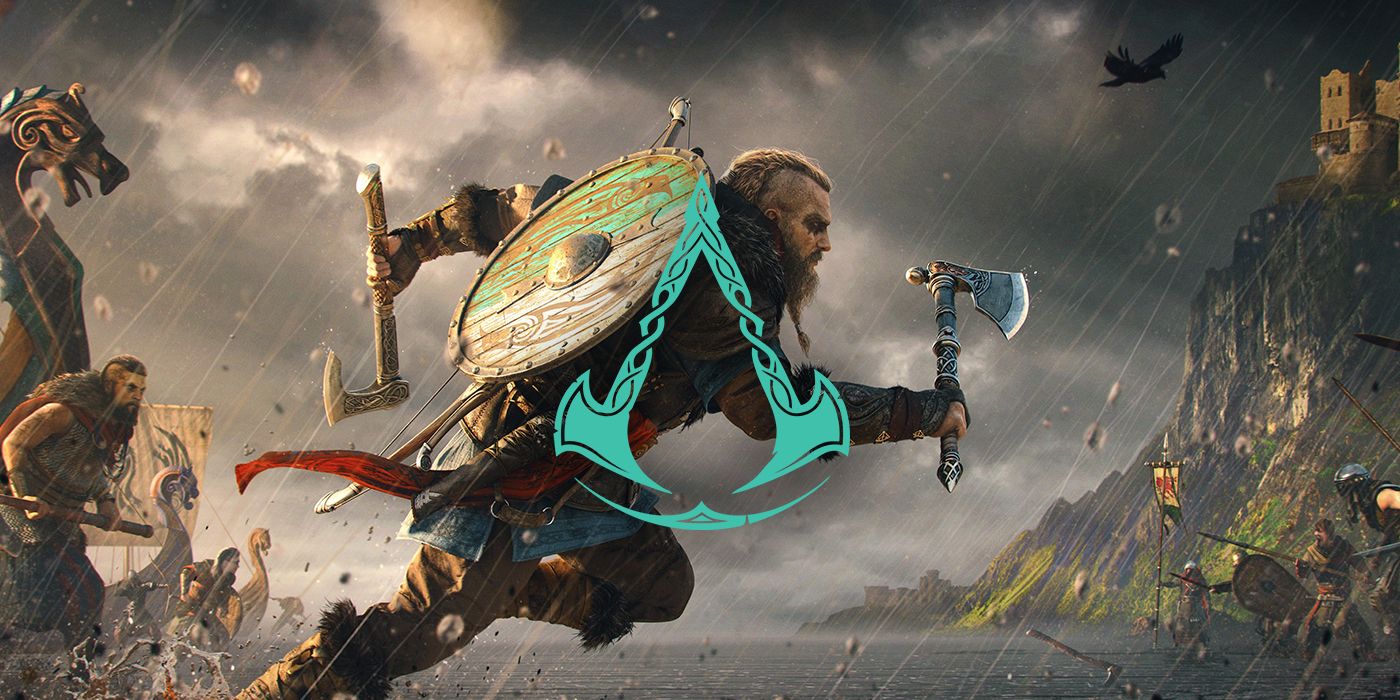The Assassin’s Creed franchise has seen a ton of changes since its inception back in 2007. Due to franchise fatigue setting in, Ubisoft skipped a year after Assassin’s Creed Syndicate and introduced AC Origins the next. The RPG elements were different and the open world was questionable ahead of its release. However, Origins managed to capture decent RPG elements with a good Assassin story, the story of its start.
Yet, the community continues to be split over Assassin’s Creed Odyssey and Assassin's Creed Valhalla, particularly with how these games are involved with a franchise. While Bayek/Amunet would become the founders of the Hidden Ones, who would become the Assassin Brotherhood, Odyssey’s story is set 400 years before Origins ever happens. Eivor, while her game is set much later, cares more for glory than the Hidden One’s goals in Valhalla.
Nowhere is Odyssey and Valhalla’s departure from the AC series more evident than in the associated symbols. Since its inception, the symbol of each Assassin’s Creed game has kept a consistent purpose, that being representing the specific cell that the game/time period is focused around, but Odyssey and Valhalla ditch this symbolism.
Assassin’s Creed Symbols and Their Meaning
Each game to a certain point, while putting its own spin on it, represented that particular region and cell. In the first AC game, while the basic symbol is utilized quite frequently, there is a symbol representative of the Masyaf cell. In Assassin’s Creed 2 and Brotherhood, the standard non-stylized sigil was the most evident, but Ezio’s clothes were sometimes adorned with the Renaissance Italy-stylized version of the symbol. Why is a big question mark, but the general symbol was at its highest then (perhaps as the most dominant cell at the time) with a few stylized versions found here and there.
Come Assassin’s Creed Revelations, players see the Turkish guide which is by far the most intricate. Sure, it could be due to Ezio’s adventures and as a way to differentiate it from AC2/Brotherhood, but the most simple explanation for it is its reflection upon the budding Ottoman brotherhood. While there is variation as to how symbolic the sigil is, they always represent a specific cell of the brotherhood.
- AC3: Connor’s rebirth of the Colonial Brotherhood
- AC4 Black Flag: The dying days of the Golden Age of Piracy, perhaps on the nose as a method of representing the Assassins commonly found among the Pirates too.
- AC Rogue – The shattering represents the death of the Colonial Brotherhood and Shay’s departure thereof
- AC Unity – The French brotherhood during a time of revolution
- AC Syndicate – The Industrial Revolution of the U.K. and the return of the Brotherhood there
AC Origins represents the founding of the Hidden Ones, especially given the inspiration of the symbol in-game. So, in looking at these, they tend to take on a more literal or symbolic meaning related to the game’s Brotherhood or to the events in-game related to said brotherhood. However, neither Odyssey nor Valhalla’s symbols fulfill these conditions that others do.
The Fault in Assassin’s Creed Odyssey and Valhalla’s Symbols
Beyond the time period, each more intricate symbol reflects on the events related to that Brotherhood and each more ‘on the nose’ symbol is directly related to that cell in and of itself. Assassin's Creed Odyssey and Valhalla are incapable of giving a symbol related to the Assassins in-game.
For Odyssey, it’s a more literal issue. The symbol is completely different from others, having no curved edge at the bottom, and it also utilizes a time period piece as a helmet and architecture for its main design. While Kassandra faces off with Proto-Templars in AC Odyssey and even works with a legendary Assassin Darius, there is no real reflection of anyone in this symbol. Indeed, the symbol is one that could work personally for Kassandra. It is reflective of the time period, but it cannot be reflective of Assassins who, at this time, did not exist.
Valhalla, on the other hand, is perhaps even more perplexing. Valhalla features Hidden Ones, who Eivor assists throughout her journey, but the symbol on the game is one featuring Viking-like braiding and design. However, at no point in the game do fans encounter a proper “Viking” Hidden One. Therefore, it doesn’t represent the cell of the time period, instead just using the design for the logo. Indeed, Basim and Hytham play a big role, but the symbol has nothing to do with them. It’s just a Viking symbol because it is a Viking game, and it’s molded into the Assassin shape because Ubisoft sells it as an Assassin’s Creed game. Indeed, the symbols went from representing cells or events that occurred to cells in time periods to marketing symbols in full.
The distinctions may be slim, but they matter in terms of how Ubisoft intends to market and direct the franchise. Prior games had strong connections between the symbol and the brotherhood; the latter two did not because Odyssey could not and Valhalla sees Eivor choose not to. Perhaps eventually Vikings join up with the Brotherhood and this logo makes sense, but as it stands, it has been reduced to a marketing gimmick.
This is something to keep in mind when Ubisoft reveals the next entry in the franchise, Assassin’s Creed Infinity. As a live-service game, it’s already different from what’s already out there, but how it treats the main symbol associated with the game will reflect on the content found in the main game. For now, fans will just have to see if strong connections to the symbol return or if its identity is forever lost in this regard.
Assassin’s Creed Valhalla is available on PC, PS4, PS5, Stadia, Xbox One, and Xbox Series X.



